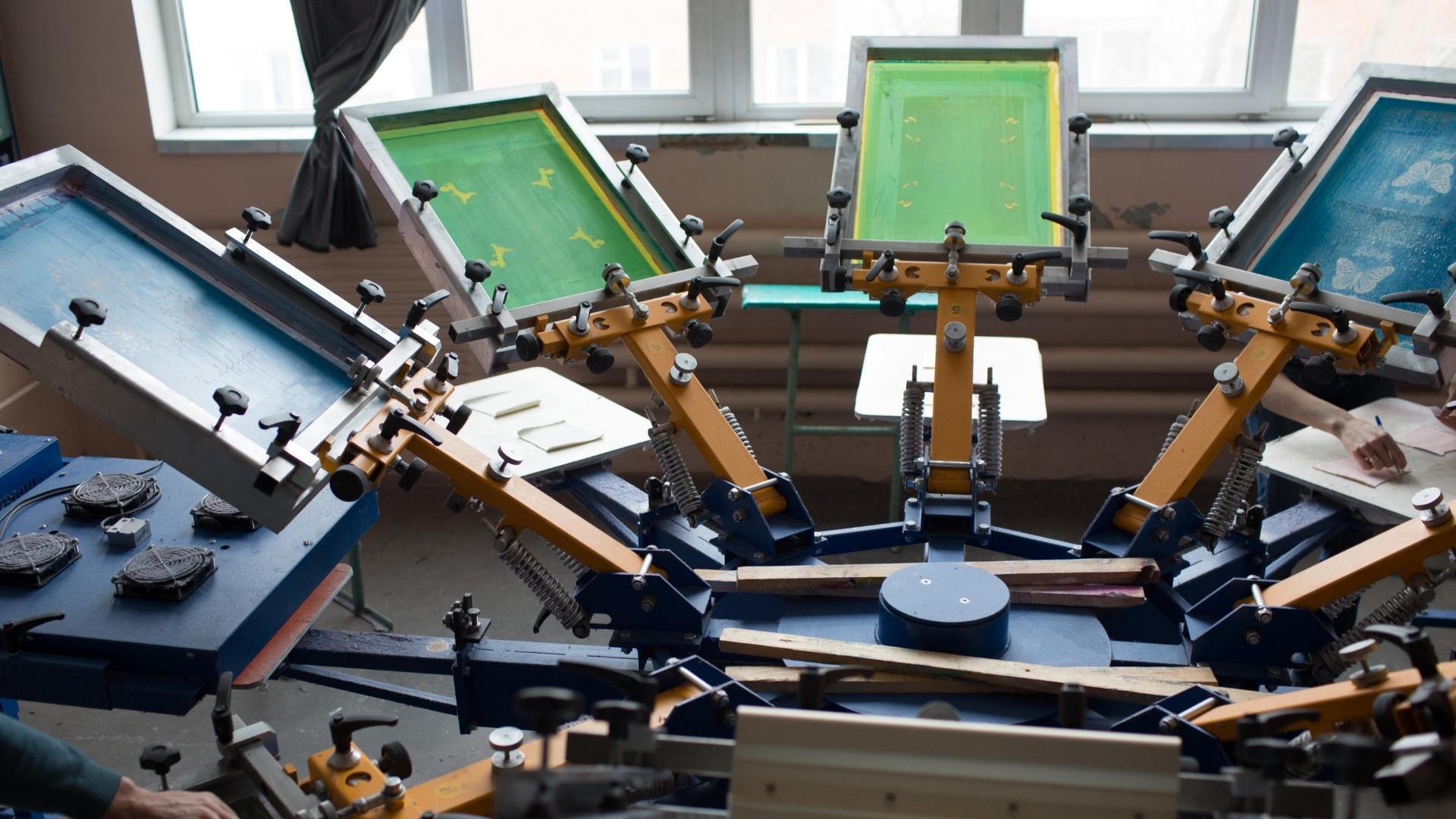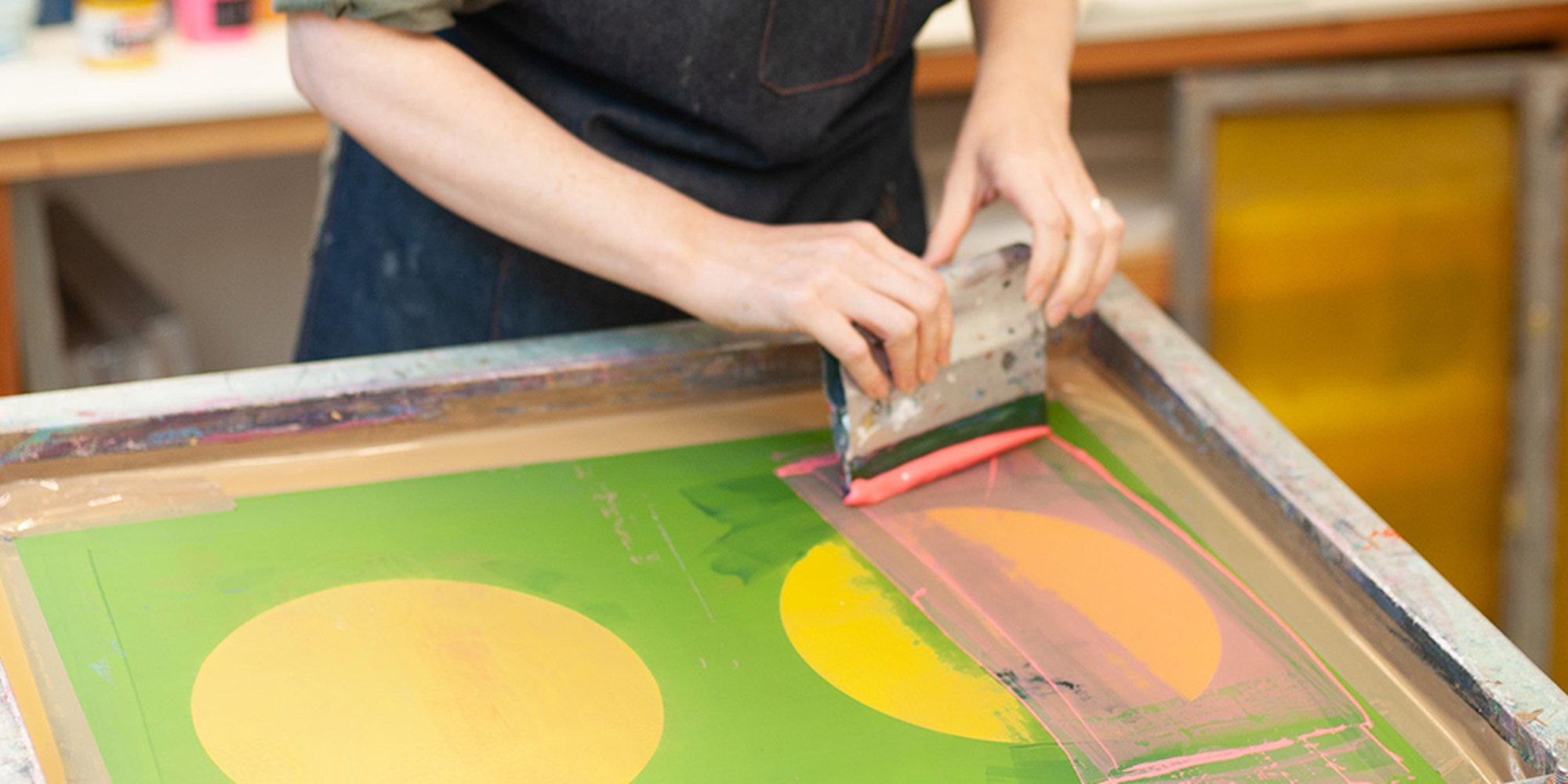The Necessary Guide to Recognizing Screen Printing and Its Versatile Makes use of
Screen printing has a rich background that dates back to ancient times, developing right into an innovative technique used throughout various markets today. This overview checks out the ins and outs of the screen printing procedure, detailing its applications in home, fashion, and marketing decoration - 10:9 Design Screen Printing. Recognizing these basics can open imaginative potential for both industrial and artistic jobs. The complying with areas will certainly reveal vital pointers and methods to enhance one's screen printing undertakings
The History of Screen Printing
Screen printing has roots that trace back centuries, its evolution reflects the technological and imaginative innovations of various cultures. Coming from old China, the strategy was initially used for enhancing textiles and later infect Japan, where it ended up being indispensable to Ukiyo-e woodblock printing. The approach moved to Europe in the 18th century, where it gained appeal amongst artisans and industrial printers. The invention of image emulsion in the 20th century transformed screen printing, allowing for more elaborate layouts and higher performance. Artists like Andy Warhol even more propelled its appeal, making use of the tool to develop famous works that mixed commercialism and art. By the late 20th century, screen printing had actually developed itself as a versatile method, employed in fashion, advertising, and great art. Today, it continues to advance, integrating digital technology and increasing its applications across numerous industries.
The Screen Printing Process Explained
Screen printing changes creative visions into tangible layouts via a series of specific steps. At first, an image is created and after that moved onto a screen, normally made from fine mesh material extended over a framework. A light-sensitive emulsion is put on the screen, which is subjected to light, hardening in locations not covered by the picture. After washing out the unhardened solution, a stencil is formed.
Next off, the screen is put over the substratum, whether it be textile, paper, or one more material. Ink is then pushed via the open locations of the stencil using a squeegee, transferring the layout onto the substrate below. This procedure can be duplicated for multiple colors, calling for separate displays for every color. The published thing is cured utilizing warmth to guarantee the ink sticks effectively, resulting in a resilient, lively layout ready for usage.
Kinds Of Screen Printing Techniques

Additionally, specialty strategies, such as discharge screen printing, remove dye from the material to create softer prints, while aluminum foil screen printing applies metal aluminum foil to achieve a shiny finish (10:9 Design near me). Each method offers unique characteristics, satisfying different creative requirements and production scales, eventually increasing the opportunities within the screen printing domain name
Applications of Screen Printing in Different Industries

In addition, the signs and marketing markets make use of screen printing for producing appealing display screens and banners. This method permits for bold shades and intricate layouts that record focus. In electronics, screen printing is employed for using conductive inks to motherboard, essential for component links. In addition, the home decoration industry accepts screen printing to generate distinct layouts on fabrics and wall surface art. Generally, screen printing acts as a critical tool throughout diverse areas, improving items with customized and aesthetically enticing graphics.
Tips for Successful Screen Printing Projects
While embarking on a screen printing job, careful interest to detail can considerably improve the last end result. Selecting top quality materials is necessary; this includes the screen, inks, and substratums. Making use of suitable mesh counts can affect ink deposition and information resolution. Prep work is equally vital; thorough cleaning of screens and appropriate exposure times ensure crisp prints.
Next view it off, exact registration is critical for multi-color prints. Using alignment devices can assist attain specific layering. Additionally, screening prints on scrap materials before manufacturing assists recognize prospective concerns without losing sources.

Regularly Asked Inquiries
What Materials Are Best for Screen Printing on Material?
Cotton and polyester blends are perfect for screen printing on fabric due to their sturdiness and ink absorption. Furthermore, specialized fabrics like silk or canvas can generate unique appearances and surfaces, boosting the overall layout quality.
Just how Do I Tidy and Maintain Screen Printing Equipment?
To preserve and clean up screen printing devices, one should frequently clean displays with ideal solvents, inspect mops for wear, lubricate relocating components, and store all things in a dry, dust-free setting to extend their lifespan.
What Are the Ecological Effects of Screen Printing?
Screen printing can have significant environmental effects, consisting of chemical waste from inks and solvents, water use throughout cleansing procedures, and energy intake. Lasting practices and eco-friendly products are vital for reducing these unfavorable results.
Can Screen Printing Be Done at Home Successfully?
Screen printing can be effectively done at home with i was reading this the right products and strategies. Enthusiasts can develop quality prints, though success depends upon their ability level, equipment, and understanding of the process involved.
What Are the Expenses Connected With Beginning a Display Printing Company?

Starting a screen printing business includes prices for equipment, products, and work area. First expenditures usually range from a few hundred to a number of thousand bucks, depending upon the range, top quality of machinery, and desired production capacity.
Screen printing has an abundant click here for more history that dates back to old times, developing into a sophisticated method used throughout numerous sectors today. One more technique, rotary screen printing, uses round displays, promoting continual printing on textile rolls, thereby improving effectiveness for massive productions. Additionally, specialized techniques, such as discharge screen printing, get rid of dye from the textile to develop softer prints, while foil screen printing uses metallic foil to attain a shiny surface. In the fashion sector, screen printing is commonly made use of to develop vivid layouts on garments, allowing brands to display their distinct styles. Cotton and polyester blends are excellent for screen printing on material due to their longevity and ink absorption.